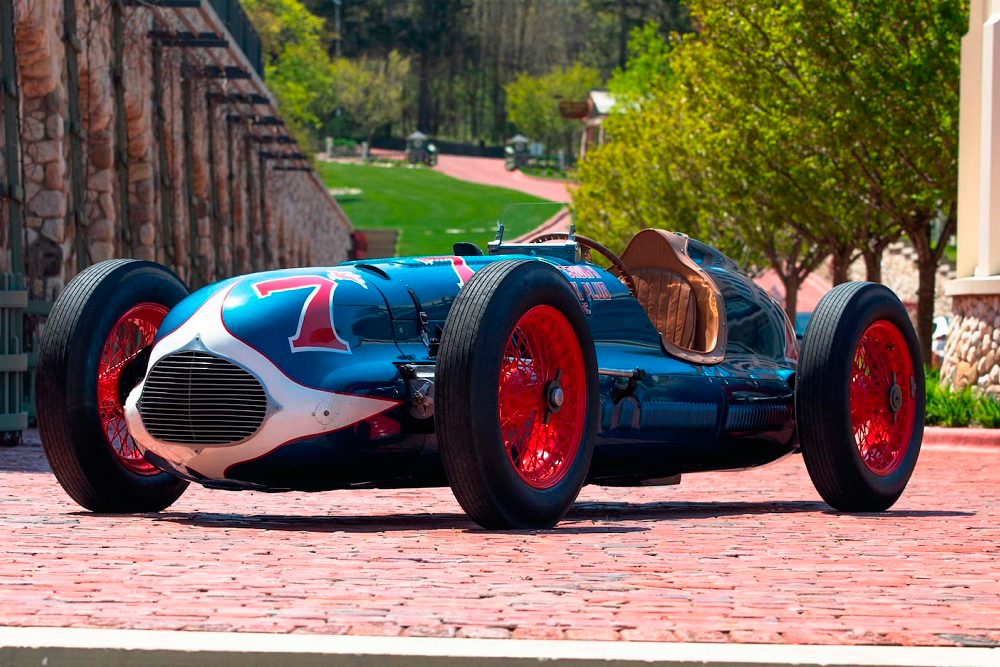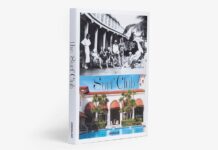After back-to-back close misses, Bill Holland won the 1949 Indianapolis 500 in this beautiful cigar-shaped No. 7 Blue Crown Spark Plug Special. While any Indianapolis 500-winning car is special, this example is one of a precious few that unquestionably qualify for an exclusive club. It is one of the most successful cars of all-time at the fabled Indianapolis Motor Speedway. In addition to winning the 1949 Indianapolis 500, Holland impressively finished second in the 1947, 1948 and 1950 races in this machine, making it quite simply one of the landmark cars in Indianapolis 500 history.

The secret to the success of the Blue Crown Spark Plug Special was that the front-wheel drive Diedt chassis—powered by a 270 CI Offenhauser engine—pulled the car around the corners versus pushing the rear wheels. It was a formula that served Harry Miller well on some of his famous cars from the mid-1920s to early 1930s. The 1946 Novi V-8-powered front-wheel drive Kurtis chassis with a distinctive cigar shape had shattered longstanding Indianapolis 500 qualification records, so it was not a surprise that Emil Diedt mimicked the successful design for 1947. Owned by Lou Moore, the Blue Crown Spark Plug Specials of Holland and teammate Mauri Rose utilized the Diedt chassis to great efficiency because they were fitted with battle-tested Offenhauser engines. The Offenhausers were reliable, whereas the much more powerful Novis were spectacular pieces of engineering, but also quite fragile.
After starting the 1947 Indianapolis 500 as a rookie driver in eighth position, Holland moved his Blue Crown up to the lead by lap 24. He would go on to dominate the race, leading 143 of 200 laps, but the finish would be marred by controversy. Late in the race, Holland and Rose were running 1-2, when Moore instructed the Blue Crown pit crew to display a written message of “EZ” on a chalkboard to the drivers. Holland duly slowed, Rose did not. Holland believed he had a lap lead over Rose, so, when he was passed with a mere eight laps remaining in the race, he simply waved to his teammate. Expecting to drive into Victory Lane and be lauded for his efforts, Holland instead saw Rose already parked and receiving the adulation of the huge crowd. It was a heartbreaking defeat, not made any easier by the fact that the two drivers would finish 1-2 again in 1948, this time with Rose taking a more decisive victory.
Twice a bridesmaid, Holland was determined to reverse the finishing order in 1949. This time the race was a near repeat of the 1947 event, with Holland leading the final 146 laps of the race and scoring a glorious third consecutive victory for the Blue Crown team. Ironically, Moore instructed his drivers, who again were running 1-2, to take it easy near the end of the race. This time it was Rose who got the bitter ending as a magneto strap broke on his car with only eight laps left in the race. For his disobedience, Moore fired Rose immediately after the race, in spite of the driver scoring wins for Blue Crown in both 1947 and 1948. Holland, enjoying the spoils of his hard-fought victory, was unaware of the drama playing out further down pit lane. He had finally won the big race and would back it up a year later with another second-place finish, meaning Holland’s four years in the Blue Crown were among the most successful runs in the history of motorsports.
Today, the car is not just another museum piece. It is currently in running order and has appeared in recent years on track as a regular participant in the vintage Indy Car meet, Millers at Milwaukee, which takes place annually at the Milwaukee Mile. It would be nearly impossible to find a more decorated Indianapolis 500-winning car available for private ownership than this spectacular Blue Crown Spark Plug Special.
Report by mecum.com










